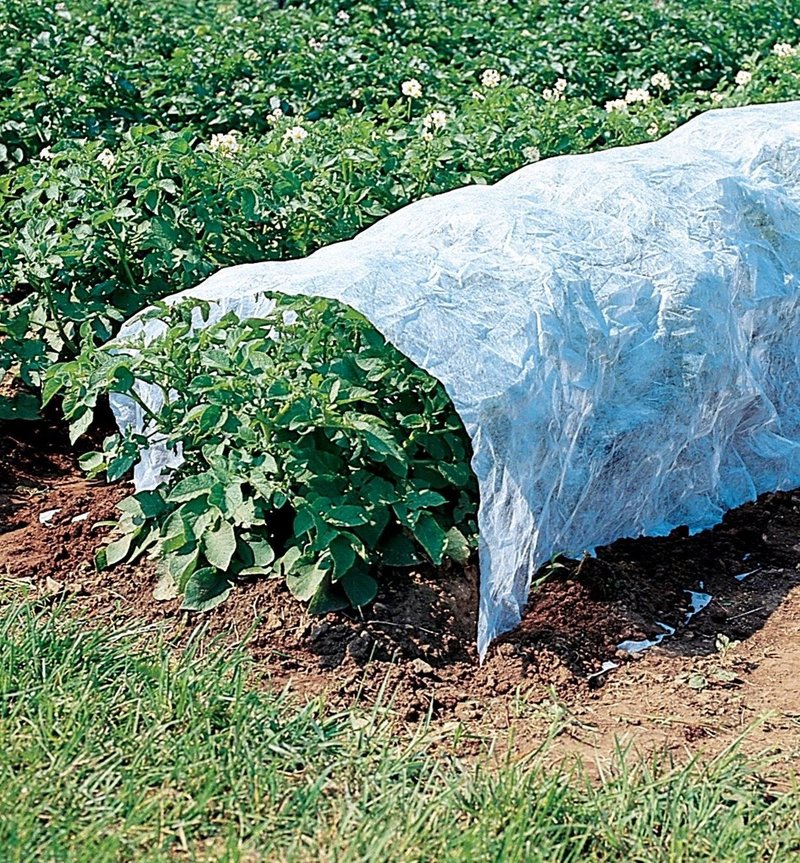
Floating row covers are lightweight, breathable sheets that sit right above your plants. They allow air and light to reach your crops while providing a barrier against hungry insects like hornworms. If you’ve ever battled these voracious pests, you know how crucial it is to prevent their access. With a floating row cover, you can enjoy a more productive garden season.
In this article, we’ll explore why floating row covers are effective, how to use them, and tips for keeping your plants safe from those green devourers. It’s like having a shield for your garden, and I’m excited to share this with you.
What Are Floating Row Covers?
Floating row covers are made of lightweight fabric, similar to a thin blanket. They’re designed to hover above your plants, creating a protective environment. You might be wondering how these covers can actually help fight off pests like hornworms. Essentially, they act as a physical barrier, keeping insects out while still allowing your plants to breathe.
These covers come in various materials, including spun-bonded polypropylene. This fabric is particularly popular because it’s durable yet gentle on plants. Plus, it lets sunlight in—a must for any plant. When you place a floating row cover over your crops, you create a microclimate that protects against pests and even helps in regulating temperature. It’s a win-win situation!
You may find covers sold in garden centers or online, often branded with names like Agrobon or PlantGuard. Each brand might have unique features, but the basic principle remains the same: safeguarding your plants from unwanted visitors.
How Do Floating Row Covers Protect Against Hornworms?
Hornworms are notorious for their appetite and can quickly turn a thriving garden into a scene of devastation. These caterpillars love to munch on tomato and pepper plants, which can be particularly heartbreaking if you’ve nurtured them from seed. Floating row covers effectively create a barrier that hornworms can’t breach, allowing your plants to grow without fear of being eaten alive.
The design of these covers means that adult moths—the ones that lay hornworm eggs—can’t access your plants. Without those pesky eggs hatching nearby, you can significantly reduce the chances of a hornworm infestation. Honestly, it’s like putting a “Do Not Disturb” sign on your favorite plants.
Moreover, floating row covers can help you extend the growing season. By keeping your plants warm, you might even be able to start growing earlier in the spring or extend harvests later into the fall. It’s like giving a little extra TLC to your garden!
Choosing the Right Floating Row Cover
When picking out a floating row cover, you’ll want to consider a few key factors. First, think about the material. Lightweight covers are great for warm weather, but if you’re growing in cooler months, you might want something a bit heavier to retain heat. Materials vary from about 0.5 ounces to 1.5 ounces per square yard, so choose wisely based on your local climate.
Next, consider the size of your garden. Floating row covers come in various sizes, from small sheets for individual plants to bulk rolls that can cover larger areas. If you have a large garden with various crops, buying a roll might be more cost-effective. On the other hand, individual sheets are great for trialing before committing to larger investments.
Lastly, don’t forget about how you will secure the cover. You’ll need to weigh it down or use anchors to keep it in place, especially on windy days. This ensures that your plants stay protected, and the covers don’t end up blowing away!
How to Use Floating Row Covers Effectively
Using floating row covers isn’t complicated, but there are a few steps to ensure you’re doing it right. First, make sure your plants are healthy and well-watered before covering them. This helps them adjust to the new microclimate.
Next, gently lay the cover over your plants, ensuring it’s not too tight. You want to give your plants room to grow without crushing them. Use stakes, soil, or rocks to secure the edges. This is crucial for keeping hornworms and other pests out.
It’s also a good idea to monitor the temperature underneath the cover. If it starts getting too warm, especially in the heat of summer, you can temporarily remove it for a few hours each day. This will help prevent overheating while still keeping those pesky pests at bay.
Common Mistakes to Avoid
Even seasoned gardeners can make mistakes when using floating row covers. One major pitfall is not checking the covers regularly. If you let them stay on too long without checking, you might trap too much heat or humidity, which can lead to mold or plant stress.
Another mistake is covering plants that are already infested with hornworms. This strategy won’t help if the pests are already inside! Always inspect your plants for signs of damage before applying covers. If you find any hornworms, deal with them before adding the protective layer.
Lastly, don’t forget to think about pollinators. If you’re growing flowering plants, floating row covers can prevent bees and other beneficial insects from reaching the blooms. You might need to temporarily remove the cover during peak pollination times to ensure a good harvest.
Are There Alternatives to Floating Row Covers?
While floating row covers are fantastic for preventing hornworm access, they aren’t the only option out there. You might consider **insect netting**, which can serve a similar purpose. This type of netting allows for more airflow and can be a good choice for larger plants.
Another option is **companion planting**. For instance, planting marigolds alongside your crops can deter hornworms naturally. These flowers attract beneficial insects while keeping harmful ones at bay. Plus, they add a pop of color to your garden!
You might also explore **natural insect repellents**. Homemade solutions like garlic or peppermint sprays can help minimize hornworm attacks. Just remember, these don’t provide a physical barrier like floating row covers do, so they may not be as effective on their own.
Final Thoughts on Floating Row Covers
At the end of the day, using floating row covers is one of the easiest and most effective ways to protect your crops from hornworms. They create a safe environment for your plants to grow, allowing you to enjoy the fruits of your labor without the worry of invasive pests.
Remember to choose the right material and size for your garden, regularly check on your plants, and have fun with it! Gardening should be an enjoyable experience, and with floating row covers, you’re one step closer to a flourishing, pest-free garden.
So next time you’re out in your garden, think of those floating row covers as your plants’ personal bodyguards. With a little effort, you can keep those pesky hornworms at bay and help your garden thrive!

